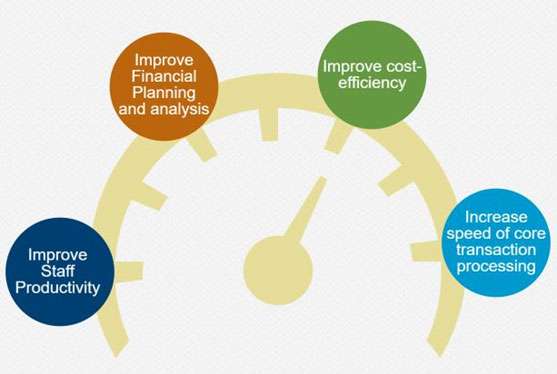In a recent survey, APQC found that three out of four finance executives are currently undertaking some form of financial process improvement project. Two goals emerged:
- stronger competencies in Financial Planning and Analysis (
FP&A ); and - faster and more productive finance functions.

That doesn’t mean all CFOs are going at both goals at once. The push for better FP&A tends to be common among companies experiencing a seismic shift, such as the arrival of a new CEO with ambitious growth plans or the need to wrangle the performance drivers of a major new acquisition. But the desire for faster financial processes rings loud and clear among all survey participants.
What’s at stake? It’s obvious, perhaps. Faster vendor-invoice processing might be crucial to a company that could not cope easily if key suppliers started halting shipments due to late payments. The Accounts Receivables corollary might involve customer invoices that require tons of people sorting details that don’t correspond and too much time to send out. Customer irritation can be hard to stop once it gets started.
Now consider how long it takes to close the books and the angst that delay can cause for operating managers eager to know how much momentum they have when the month ends. How long is too long to wait? A bit of benchmarking helps here. According to APQC's Open Standards Benchmarking® repository, top performers (the top quartile) close the monthly consolidated financial statements at twice the speed (at least) that bottom performers do (see chart). Keep in mind that the data listed for the top performers represents the slowest of that quartile; many top-performing organizations get the job done much more quickly.

Generally, data consistency contributes to faster speeds in preparing monthly consolidated statements because the
That’s so easy to say, but so much harder to bring about. Three out of four of those surveyed report that the biggest obstacle they face in finance process improvement involves the need to integrate the flows of data coming from multiple systems. In speaking with finance executives at large companies, APQC often hears of 10, 20, or even as many as 40 ERP systems lurking behind the scenes.
For many, the underlying factor is continual upheaval in the enterprise business portfolio. Striving for smooth financial data integration can be like trying to pin JELLO to a wall. Just when you think you’ve got it in position, it moves. The CFOs of young, fast-growing companies may want to think about setting the right conditions for data, systems, and process consistency early on, before they look to acquire in a big way or look to be acquired.

